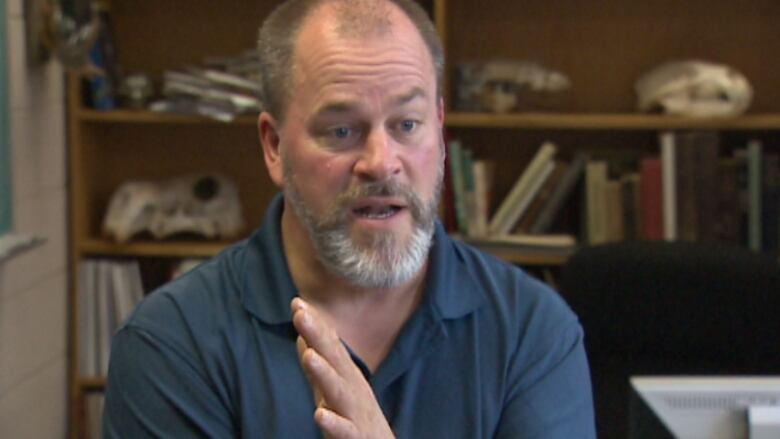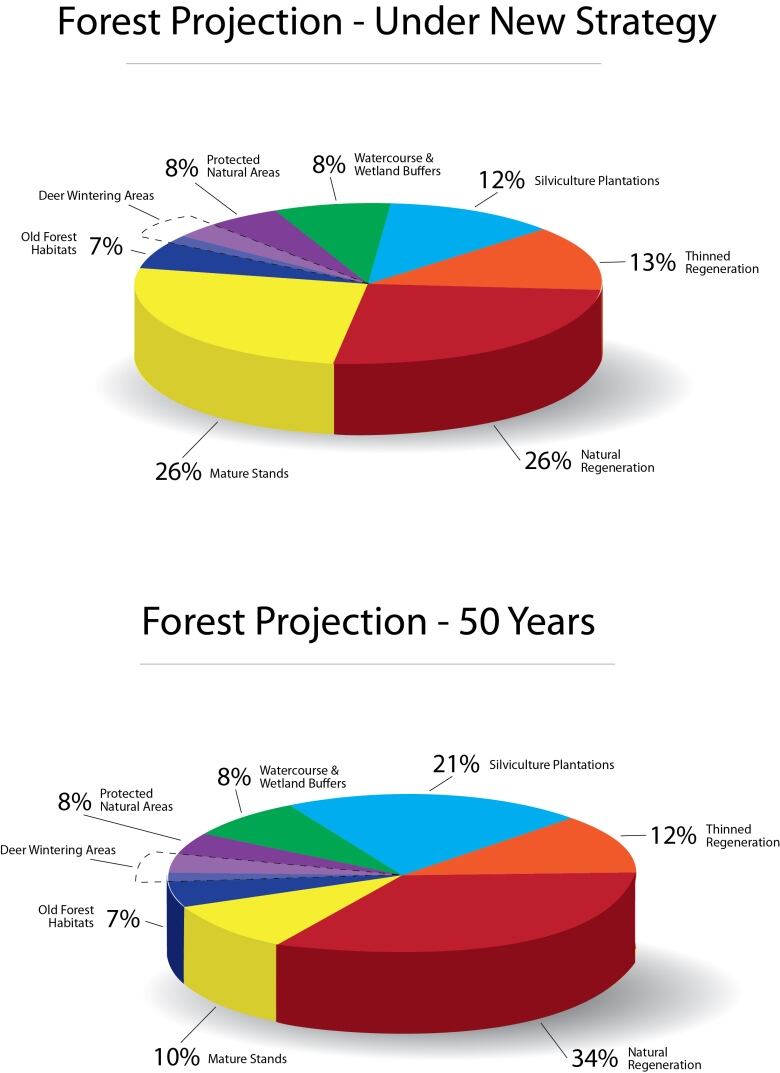New Crown forestry plan greeted with shock, dismay
Line in the sand to protect wildlife, nature has been crossed, says forestry professor Graham Forbes
The Alward government's decision to increase the amount of softwood that industrial forest operations will be allowed to cut on Crown land is being greeted with shock and dismay in some corners.
The new forest policy was announced Wednesday. It boosts the amount of softwood that can be cut on Crown land annually by 20 per cent, or 660,000 cubic meters.
To help achieve that, the amount of Crown land that is off-limits to the forest industry such as old growth forest and deer wintering habitat has been reduced to 23 per cent, from the traditional level of 30 per cent.

"It's an abject fail. It's not sustainable. It's a joke."
That 23 per cent consists of the 7 per cent of Crown land that is old growth forest, 8 per cent designated as protected natural areas, and 8 per cent that is in buffer zones around watercourses and wetlands.
The new policy states the strategy is "balanced" and respects the principles of conservation and biodiversity.
Forbes doesn't accept that.
"The minister loves talking about balance and I'm getting very tired of hearing the word balance," he said.
"It's often put out there as an idea of fairness and 50-50, but it was never 50-50.
"It was usually about 70 per cent of the pie toward timber and jobs, the economic aspect. Thirty per cent is the minimum required to protect these other values," said Forbes.
We've set this as a line in the sand and we've gone below it.- Graham Forbes, UNB forestry professor
"We've set this as a line in the sand and we've gone below it."
Roberta Clowater, the executive director of the Canadian Parks and Wilderness Society in New Brunswick, called the new policy "regressive."
"It's really important that the people of New Brunswick understand that the government is taking away more than a quarter of the amount of our public landthat used to be specially managed to conserve wildlife and rivers and fish," said Clowater. "And they're basically giving it over to increased logging and much more clear-cutting."
Government maintainsthe increased wood volume can be achieved without increasing the proportion of clear cutting taking place. Over the next 10 years, the government says the reliance on clear cutting will be reduced with more wood being harvested through commercial thinning.
"This is a really regressive plan," said Clowater. "It'staking away basically the advancements that we've made inforestmanagement planning over the last 30 years and it's leaving us behind every other province inCanada.
"NewBrunswickersneedto understand this is really serious change," said Clowater. "I don't believe the foresteco-systemis going to be able to sustain this amount of pressure on public land."
"NewBrunswickersneedto understand this is really serious change.- Roberta Clowater, N.B. executive director Canadian Parks and Wilderness Society
The new forest policy document shows that under the new strategy, 26 per cent of the annual cut will come from mature stands initially and 12 per cent from silviculture plantations. The policy projects that in 50 years, 10 per cent of the annual softwood volume will come from mature stands and 21 per cent will be from tree plantations.
"It's Jaakko Pyrydelayed," said Forbes, referring to a 2001 report commissioned by the provincial government that recommended ways to double the annual allowable cut within 60 years.
A government committee studied the report and held public hearings before rejecting the report's recommendations.
"Essentially it was rejected as not being what people wanted," said Forbes. "They did not want that much industrial forest. They wanted other values represented and they didn't support the guaranteed wood supply."
Clowateralso noted the increase in the harvest from tree plantations that is projected over time.
"Certainly, that increase is coming at a cost of less area that is going to be specially managed to conserve wildlife habitat for species that don't do well in plantations, which are many," she said.













_(720p).jpg)


 OFFICIAL HD MUSIC VIDEO.jpg)
.jpg)



























































































